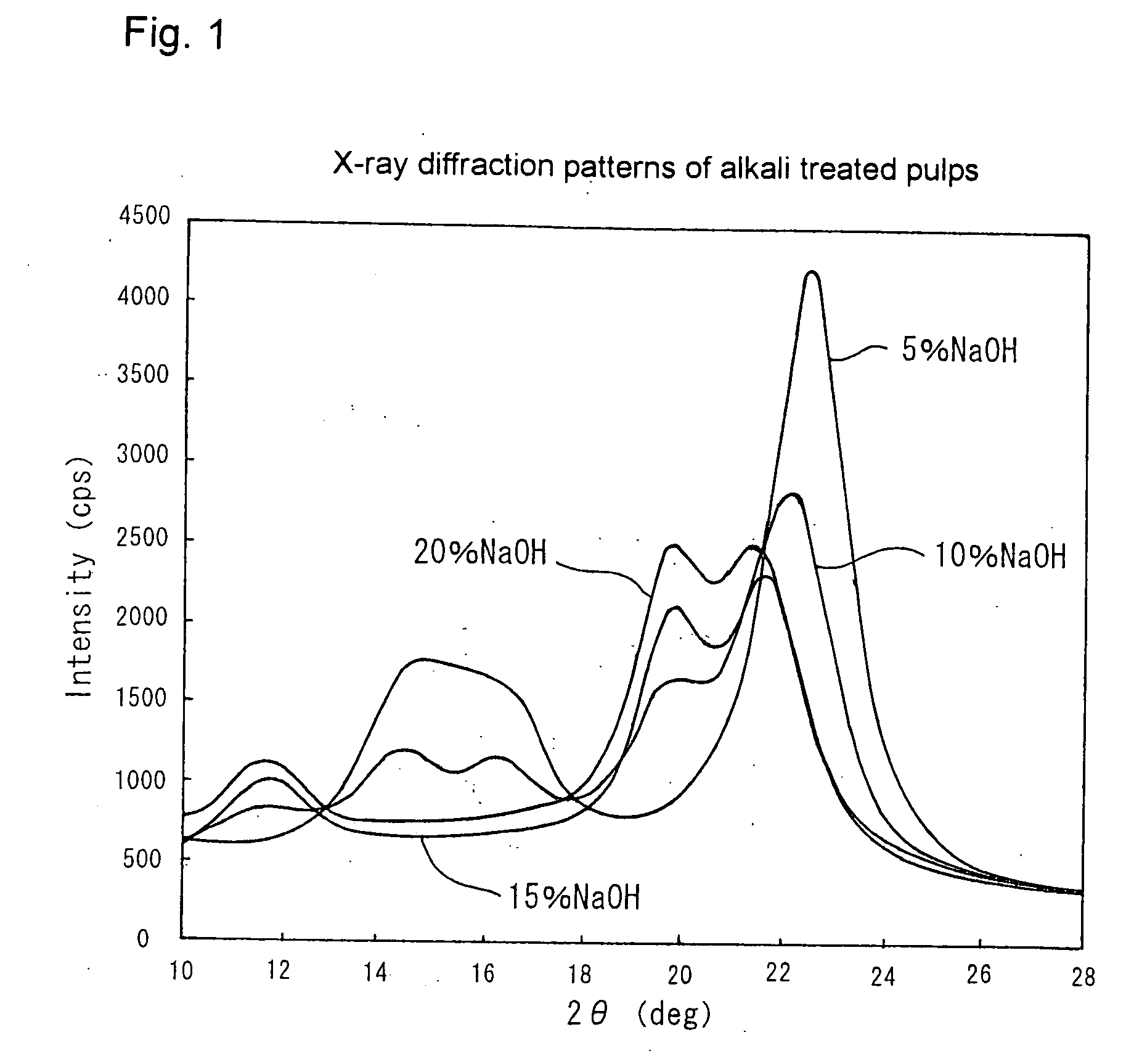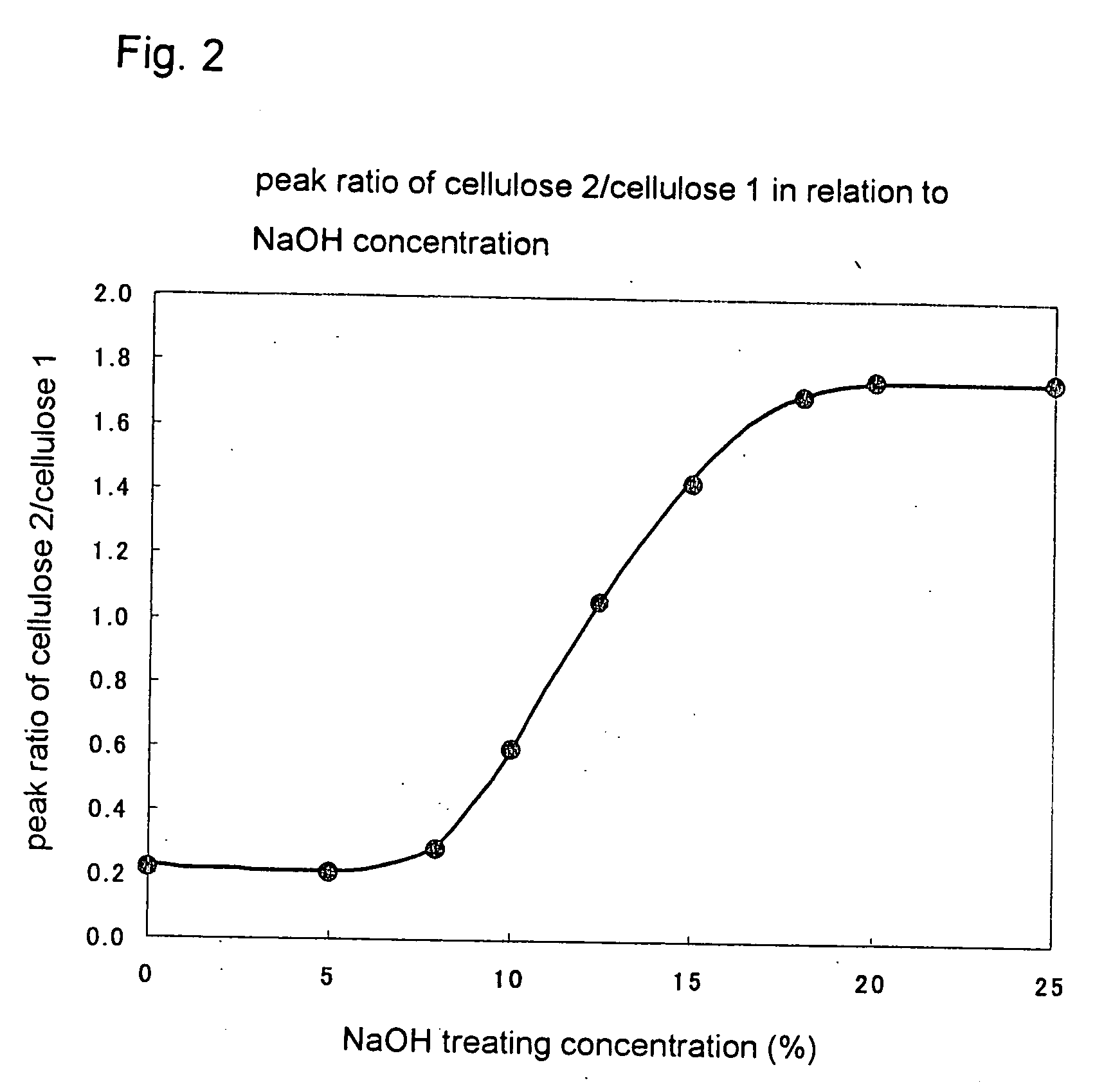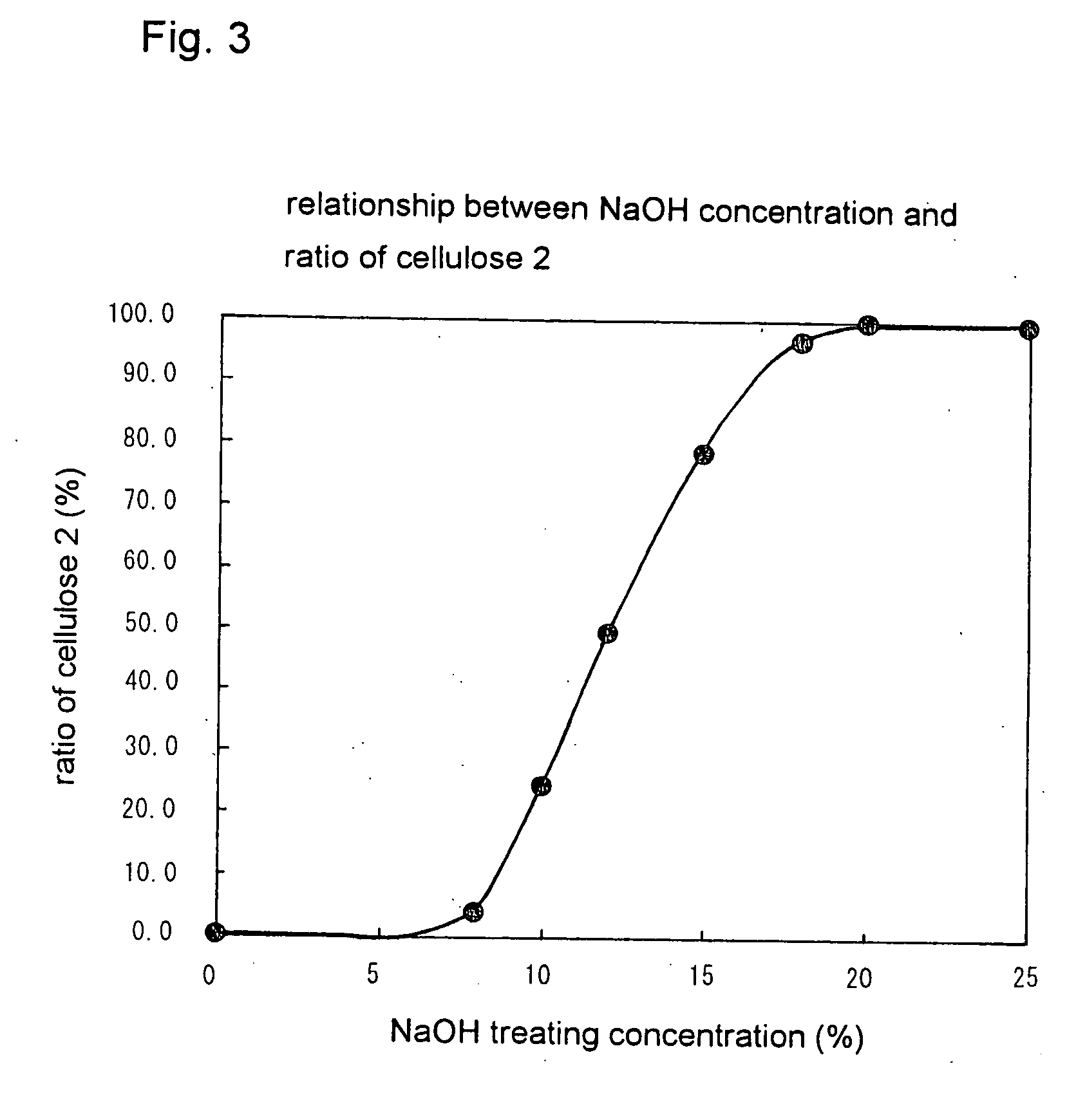Separator paper for alkaline battery and the alkaline battery
a technology of separator paper and alkaline battery, which is applied in the direction of cell components, cell components, cell components, etc., can solve the problems of reducing the electric capacity of the battery, pore size, and the amount of positive and negative electrode active materials, so as to improve the electric properties of the battery, reduce the volume of separator paper, and high gas tightness
- Summary
- Abstract
- Description
- Claims
- Application Information
AI Technical Summary
Benefits of technology
Problems solved by technology
Method used
Image
Examples
embodiment 1
[0075] Non Bleached coniferous tree pulp of 600 kg is immersed in NaOH aqueous solution of 8.5 t (ton) that has the concentration of 15 weight %, in order to break the pulp in the NaOH aqueous solution. After breaking, the NaOH aqueous solution is left at rest during 0.5 hours. After pressing the pulp slurry by a belt pressing extractor in order to remove excessive alkali solution, the alkali treated pulp is thrown into water in order to remove the alkali solution from the alkali treated pulp. After neutralizing the alkali treated pulp by H2SO4, the alkali treated pulp is washed with water. The pulp slurry is again pressed and is dried in order to obtain an alkali treated pulp (the ratio of cellulose 2 is 75%, the degree of polymerization is 1350, and the brightness is 53%) of 500 kg that has a crystalline structure in which the cellulose 1 and the cellulose 2 coexist. After breaking the alkali treated pulp of 500 kg in water of 14 t in order to obtain a pulp slurry, the pulp slurry...
embodiment 2
[0076] Bleached Manila hemp pulps of 600 kg are immersed in NaOH aqueous solution of 6.0 t that has the concentration of 14 weight %, in a condition of pulp sheets. After immersing, the pulp sheets are left at rest during 5 hours. Next, the pulp sheets including the alkali solution are put in a pile and are pressed by a hydraulic press machine, in order to remove the excessive alkali solution from the pulp sheets. The alkali treated pulp sheets are thrown into water to be broken in water, in order to obtain pulp slurry. After the pulp slurry is washed with water and is neutralized, the pulp slurry is pressed by the belt pressing extractor and is dried in order to obtain an alkali treated pulp (the ratio of cellulose 2 is 60%, the degree of polymerization is 1100, and the brightness is 76%) of 530 kg that has a crystalline structure in which the cellulose 1 and the cellulose 2 coexist. After breaking the alkali treated pulp of 530 kg in water of 14 t in order to obtain a pulp slurry,...
embodiment 3
[0077] Non-bleached coniferous tree pulps are immersed in NaOH aqueous solutions having the concentration from 10 weight % to 17 weight %. A procedure similar to that of the embodiment 1 is used in order to obtain alkali treated pulps (the ratio of cellulose 2 is 22%, the degree of polymerization is 1460 and the brightness is 50%, etc.) that has a crystalline structure in which the cellulose 1 and the cellulose 2 coexist. Using a procedure similar to that of the embodiment 1, the alkali treated pulps are subjected to the beating treatment until the CSF value becomes 0 ml. The average fiber length is 0.38 mm after the beating treatment and the time for the beating treatment is 5 hours (embodiment 3-1). Separator paper for an alkali battery (embodiment 3-1) having a thickness of 30.5μm, a gas tightness of 396 minutes / 100 ml, and an area shrinkage rate of 3.5% is obtained by making paper from the beaten alkali treated pulp by using the Fourdrinier paper machine.
PUM
| Property | Measurement | Unit |
|---|---|---|
| thickness | aaaaa | aaaaa |
| surface-area shrinkage rate | aaaaa | aaaaa |
| length | aaaaa | aaaaa |
Abstract
Description
Claims
Application Information
 Login to view more
Login to view more - R&D Engineer
- R&D Manager
- IP Professional
- Industry Leading Data Capabilities
- Powerful AI technology
- Patent DNA Extraction
Browse by: Latest US Patents, China's latest patents, Technical Efficacy Thesaurus, Application Domain, Technology Topic.
© 2024 PatSnap. All rights reserved.Legal|Privacy policy|Modern Slavery Act Transparency Statement|Sitemap



